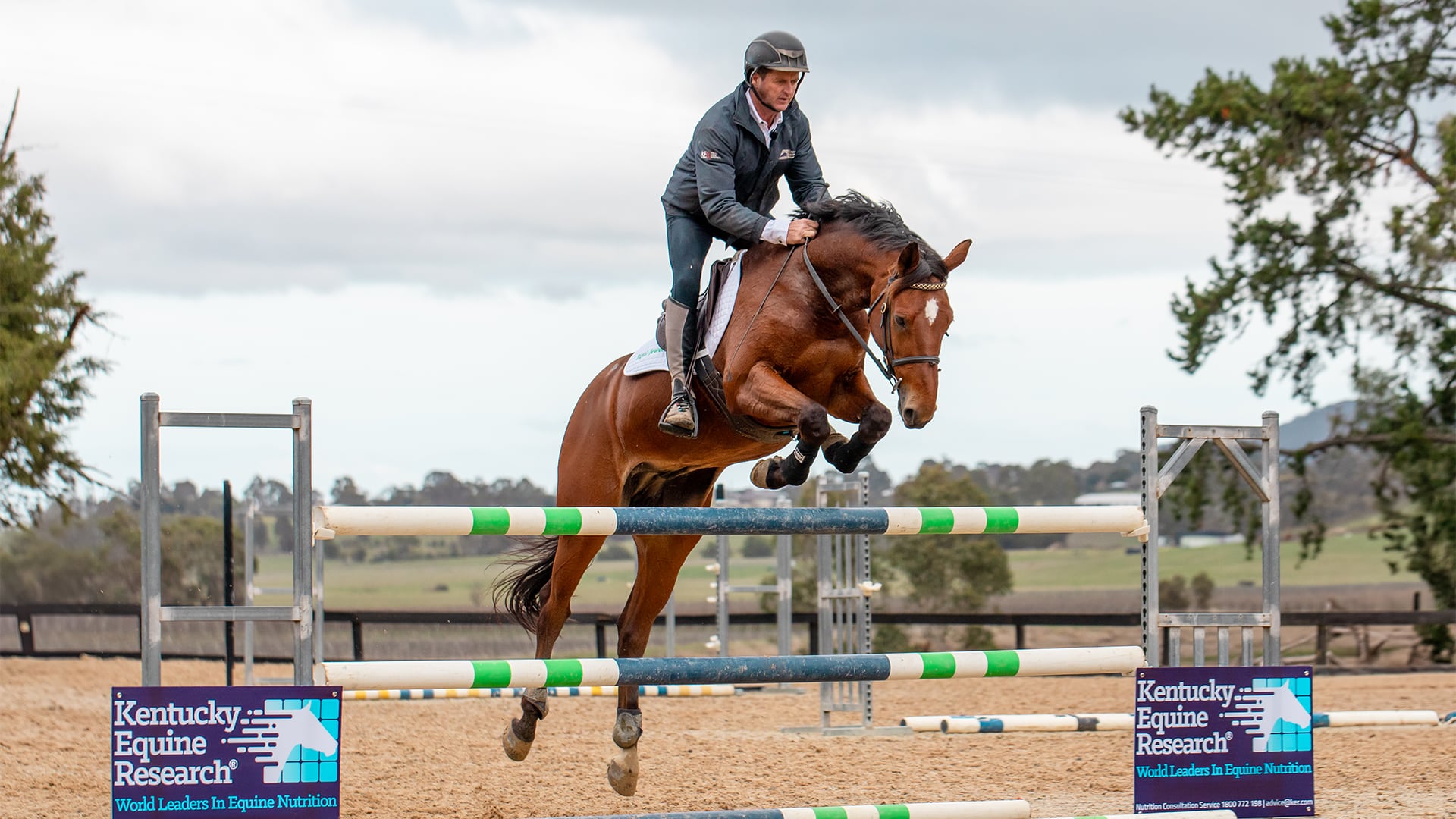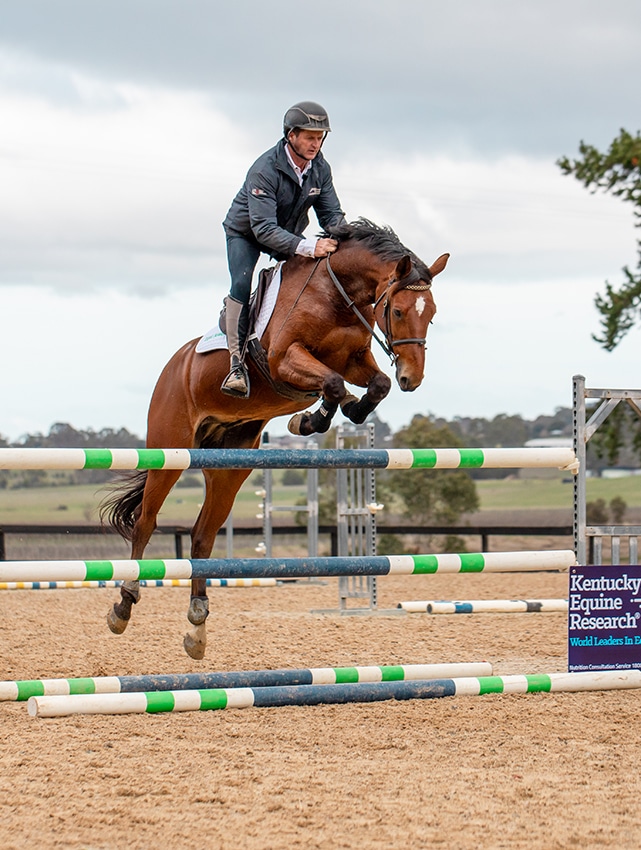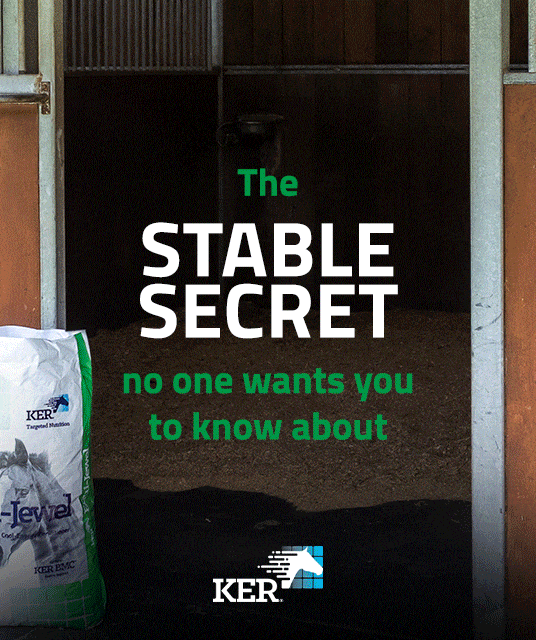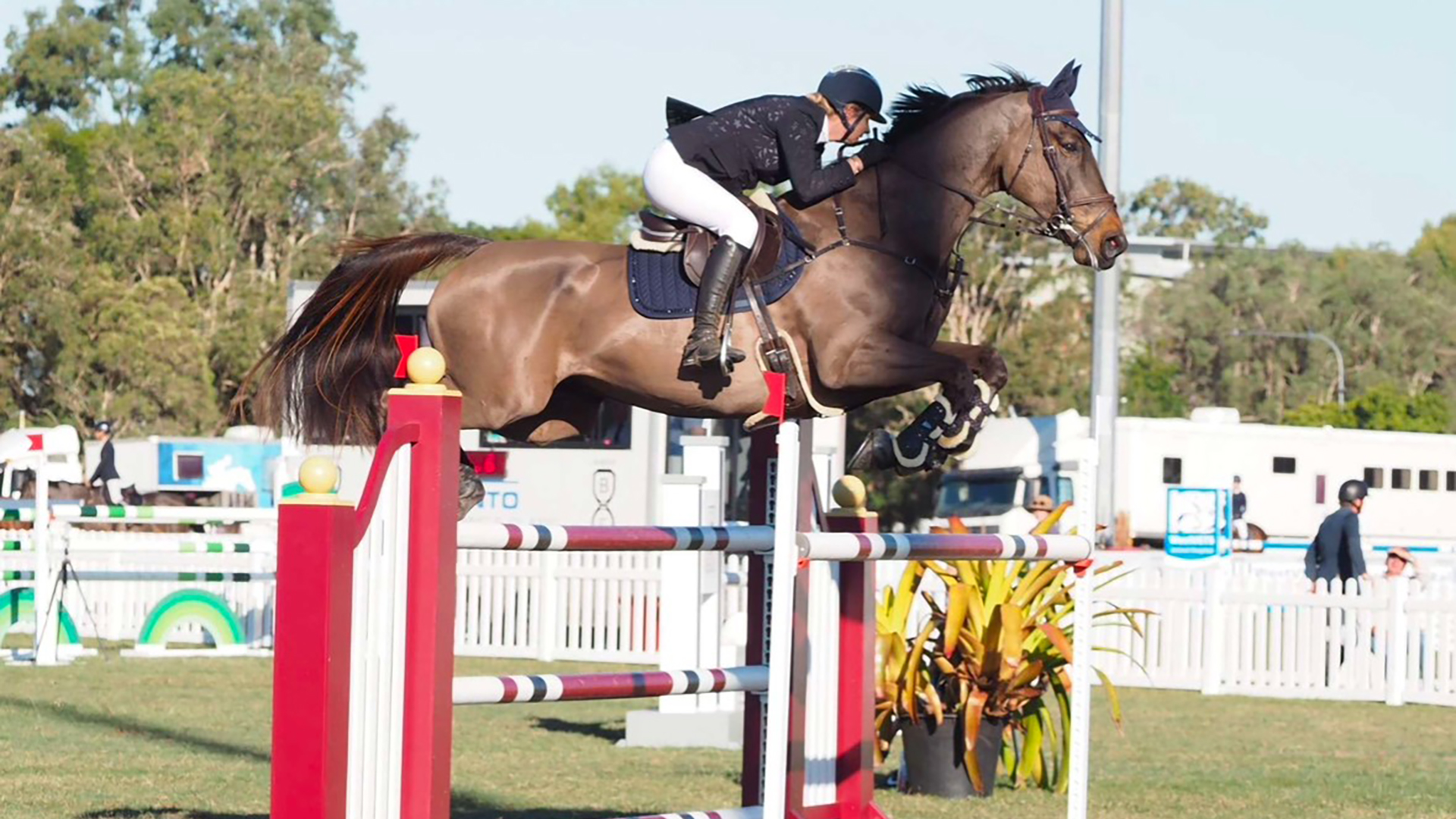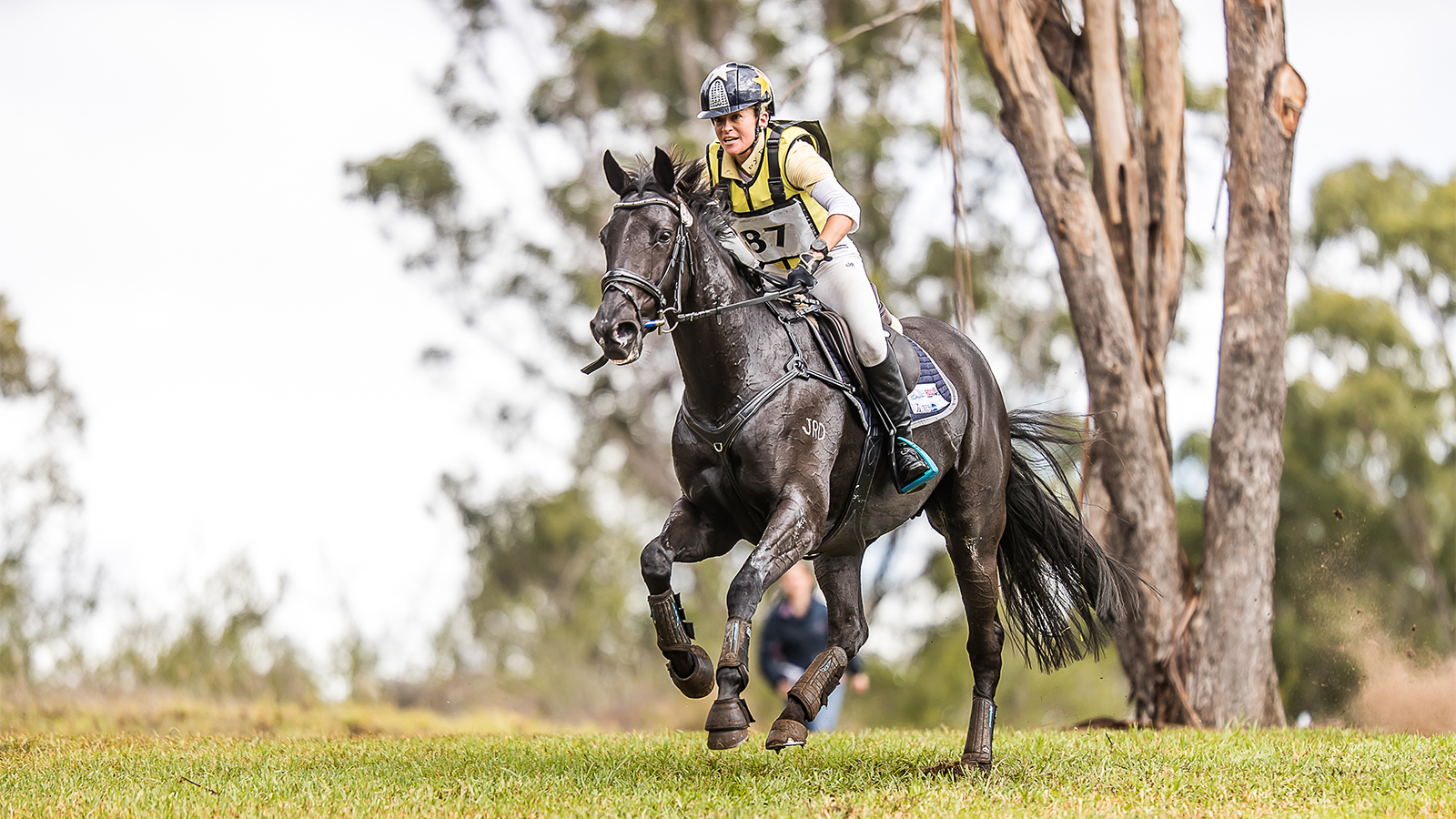A horse’s energy sources directly influence behaviour, stamina, and overall health and performance. Kentucky Equine Research and showjumper Brook Dobbin explain how to tailor feeding for controlled, sustained energy.
“Hot,” “fizzy,” or “over the top” are all ways to describe a horse with more energy than it can sensibly manage. Unfortunately, this kind of behaviour tends to surface at the worst times — during competitions, outings, or moments when calm focus is most needed. While training, environment, and handling all play a role, the horse’s diet is often the hidden driver of these unwanted bursts of energy. By understanding how different energy sources work in the equine diet, horse owners can make better feeding choices to support steady, controlled performance.
ENERGY SOURCES IN THE EQUINE DIET
Horses gain energy from three main sources: carbohydrates, fat, and protein. Carbohydrates are further divided into two groups:
Structural carbohydrates (forage, hay, pasture, beet pulp, soy hulls, lupin hulls) form the foundation of a horse’s diet. They are slowly fermented in the hindgut, providing a steady “cool” energy supply while supporting digestive health. Inadequate fibre intake can set the stage for gastric ulcers, hindgut acidosis, and behaviour problems.
Nonstructural carbohydrates (NSC) include starches and sugars found in cereal grains and lush pasture. Nonstructural carbohydrates are digested in the small intestine and are released rapidly into the bloodstream as glucose. Any blood glucose that is not used immediately for muscle activity is stored as glycogen for later use. Nonstructural carbohydrates are the most common form of energy fed to high-performing athletes, especially racehorses. However, some horses are prone to becoming hyperactive or fizzy after a meal of cereal grain, much like a child after too many lollies. Riders will also report that some horses on high-grain diets will tire rapidly after a short, intense exercise session. In these instances, it is wise to reduce their reliance on NSC as an energy source and replace these calories with fibre sources (beet pulp and soy hulls) and fat sources (vegetable oil and stabilised rice bran).
Fat provides energy in a sustained and controlled way. Over time, horses adapt to using fat as a primary fuel source, sparing their glycogen reserves for when they are really needed. Horses on high-fat diets often display calmer behaviour and greater stamina, especially in endurance and eventing disciplines.
Protein also contributes to energy, though inefficiently, and plays a more important role in muscle repair and tissue maintenance. Contrary to common belief, protein is rarely the cause of hot behaviour.
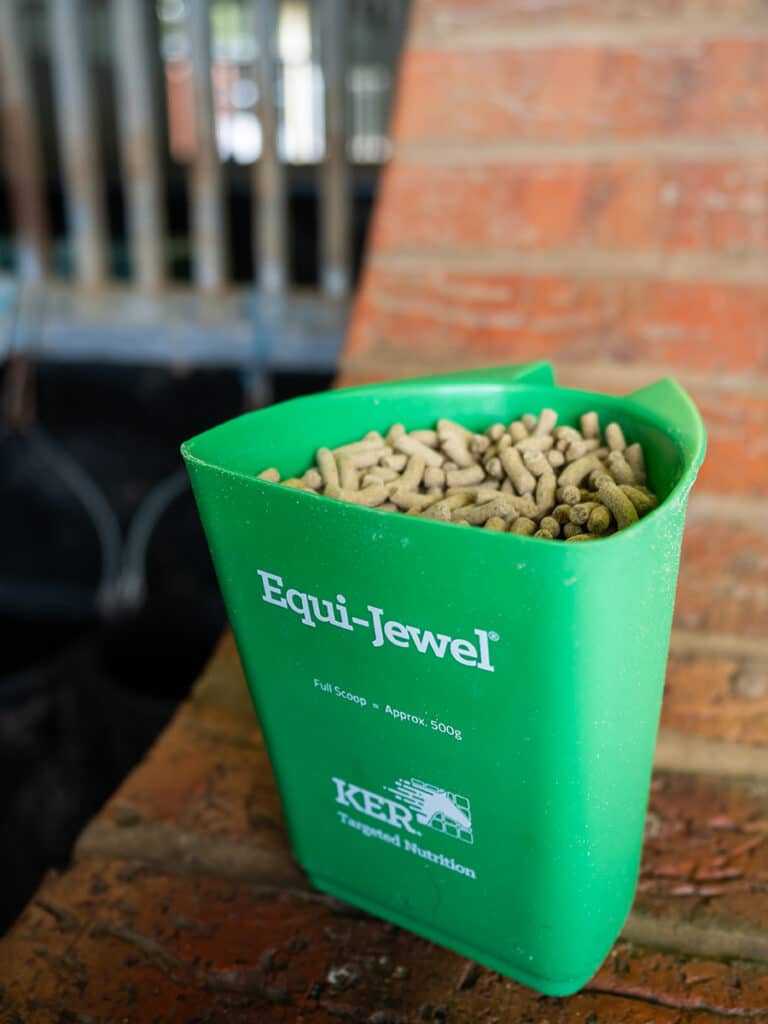
One of the most effective ways to add fat calories without the unwanted fizz of starch and sugar is with stabilised rice bran, such as Equi-Jewel® from Kentucky Equine Research.
STABILISED RICE BRAN – EQUI-JEWEL®
One of the most effective ways to add fat calories without the unwanted fizz of starch and sugar is with stabilised rice bran, such as Equi-Jewel® from Kentucky Equine Research.
Rice bran is the brown layer under the outer hull of rice kernels. It is naturally high in oil (~20%) and essential fatty acids. To lock in the freshness, bran is heat-and-pressure treated to deactivate lipase enzymes that would otherwise degrade the fat. This process, called stabilisation, prevents rancidity while preserving rice bran’s naturally high fat content. Bran is naturally high in phosphorus and low in calcium. This can sometimes upset the recommended mineral balance in the diet, thus Equi-Jewel® is fortified with KER BMC®, a highly bioavailable calcium source, which buffers the gastric and hindgut environments.
Adding Equi-Jewel®, an easy-to-feed extruded pellet, to your performance horse’s diet provides:
Cool energy: Delivers fat calories that fuel performance without blood sugar spikes.
High caloric density: Small amounts supply significant energy, reducing the need for large grain meals. We recommend 250g-1kg per day.
Digestive support: With added KER BMC® (a marine-derived buffer), Equi-Jewel® protects gastric and hindgut health, which can help with calm behaviour.
Condition and topline: Improves coat shine, body condition, and muscle definition.
Superior antioxidants: Added natural vitamin E and organic selenium support muscle health and repair in hardworking horses.
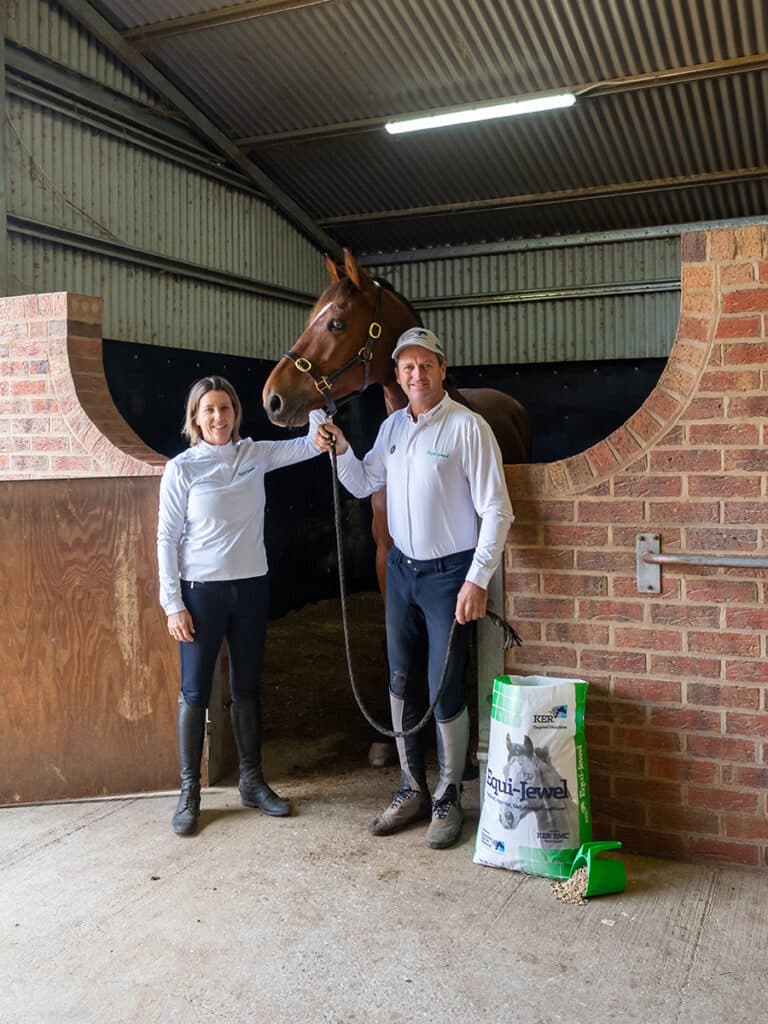
Brook feeds a primary base of roughage as chaff and Barastoc KER Low GI Cube®, followed by Equi-Jewel® to maintain a consistent slow-release energy source.
HOW TO DEVELOP ENERGY WITHOUT THE FIZZ – WITH WORLD CUP SHOWJUMPER, BROOK DOBBIN
Developing sufficient energy; without compromising the horse’s rideability, is essential for performance horses in training and on competition day. As with most athletes, nutrition and training go hand in hand, each playing a vital role in supporting the physical and mental ability to perform at their best when it matters most.
No stranger to the demands of the sport, Brook Dobbin reiterates the importance of knowing the individual horse and assessing their unique needs and temperament, alongside diet, training and level of fitness.
When asked about feeding for energy, Brook says, “It changes for every horse. Some horses are naturally more alert [but], even horses that appear to have lots of energy at the start… can fall apart quickly.”
To combat this, Brook feeds a primary base of roughage as chaff and Barastoc KER Low GI Cube®, followed by Equi-Jewel® to maintain a consistent slow-release energy source that is both controlled and long lasting.
“By using the Equi-Jewel® feeding program, we find that even at the end of the class, the horse is still maintaining a very good level of energy for us to complete our competitions,” says Brook.
And when it comes to figuring out the right energy balance for your horse? Brook admits it’s a matter of finding the right approach for each individual, with the horse’s fitness level and body score being key considerations when determining their feeding program.
But developing focused energy doesn’t end there – with a sufficient exercise program being the next piece to the puzzle.
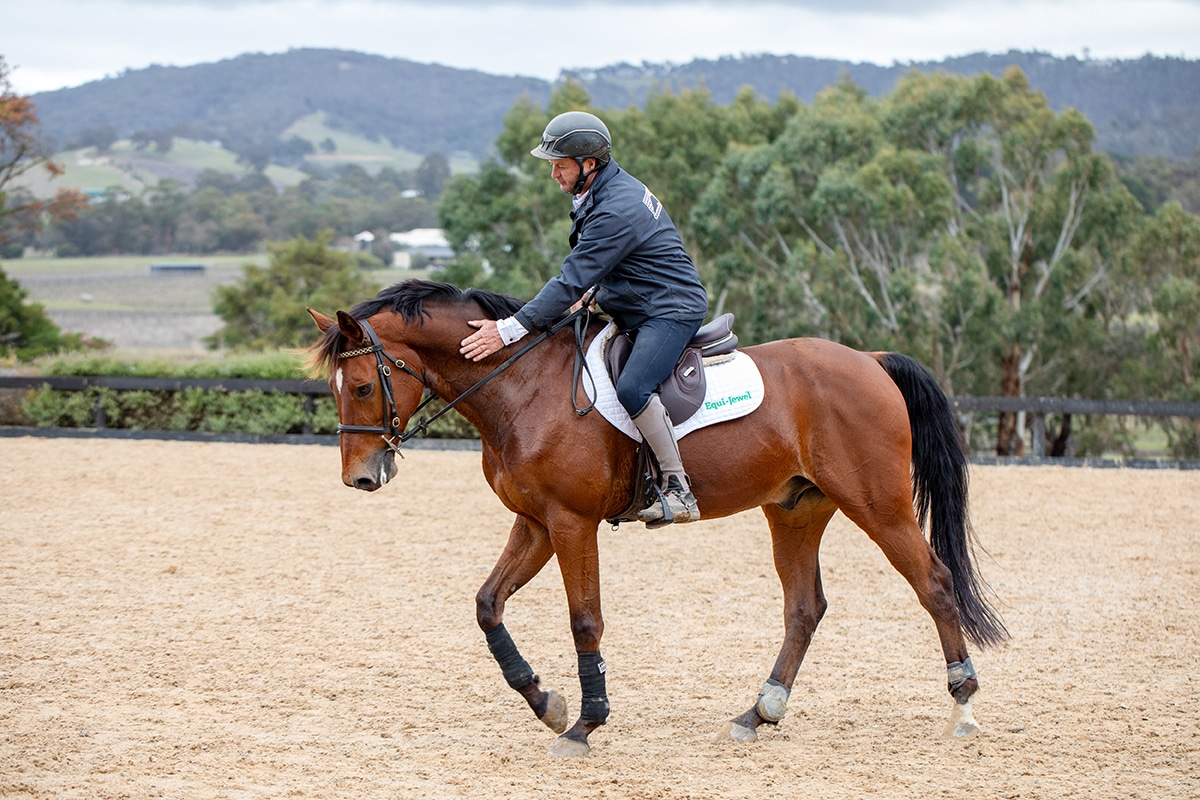
Brook says it’s of course also important to know the individual horse and assess their unique needs when it comes to diet.
“As well as developing a diet that’s going to suit our energy requirements, we also need an exercise program,” says Brook. “This ensures we have the correct energy levels within our fitness and our diet at the same time, to achieve optimum performance at a higher level.”
On this, Brook stresses the importance of a good quality canter in showjumping – one that is adjustable and suitable for the course at hand, regardless of whether the horse is 18 hands or 14 hands.
“Working on that adjustability in the canter creates a very good core fitness for the horse. And by doing that, we create overall better energy levels for us to compete,” he says.
“We need them to move forward off their back end,” Brook emphasises. “All the time we’re trying to squeeze the horse’s backend towards the front, towards the bridle. And once we have more adjustability in all the paces, it just makes that job a little easier.”
By establishing this high level of adjustability within the paces, riders can encourage the horse to create more ‘bounce’ within the movement and stay more energetic and responsive – ready to meet the task at hand.
In the end, it’s about building energy from the ground up, through thoughtful feeding, targeted fitness and training that recognises the individual horse and their needs. With the right program in place, you can unlock a horse with the energy to go the distance, and the focus and balance to do it well. EQ
